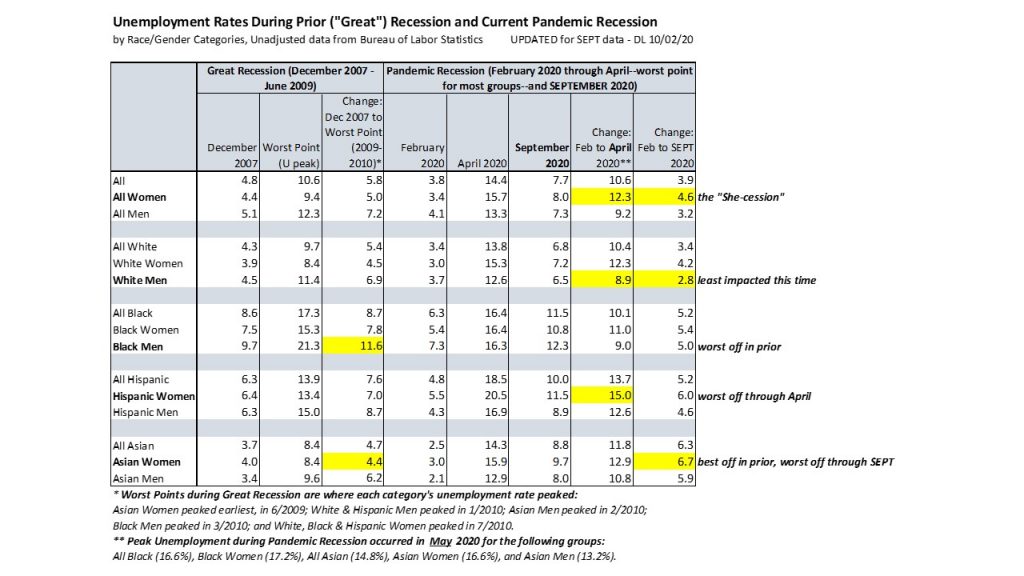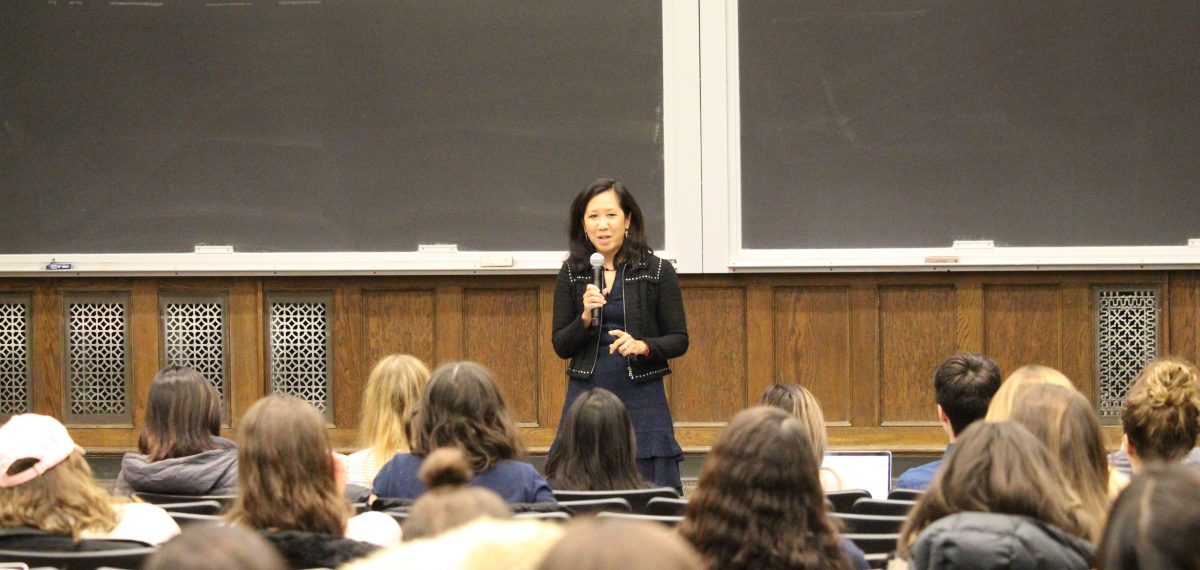10/22/20: Belated UPDATE through September data to charts below, originally shared on Twitter here. (I’ll make future updates here as well in order to keep in one place where some might look thanks to the new Center for American Progress report by Mike Madowitz and Diana Boesch published today.)
Today the BLS released their monthly “Employment Situation” report –and the report’s underlying data (which you can access here), including numbers on Asian women separated from Asian men which are not included in the report. Here’s a small, mostly quantitative update to my original post (with Mina Kim) from last month. First, the bottom-line/main-story bar chart:

… and below, the updated table with detailed unemployment stats by race and gender:

One thing I decided to adjust in the bar chart and add as note to the table is that April 2020 was when the unemployment rate peaked for the workforce overall as well as for most of the race-gender categories–except that the peak for Asians (both men and women) and for Black women (and Black overall but not Black men) happened in May. So the bar chart compares the absolute change in unemployment rate during the (aftermath of the) Great Recession compared with the change from this February to either April or May–whichever was the worst point for each race-gender category.
Some findings worth highlighting (or repeating):
- Asian women fared the best in the Great Recession in that their absolute change in unemployment rate from the start of the recession to peak unemployment was the smallest of all race-gender categories;
- From the start of the Pandemic Recession (Feb. 2020) to either peak unemployment in April or May, or to the latest data for September, White men have fared the best (their September unemployment rate is just 2.8 percentage points higher than in February);
- Hispanic women fared the worst in the Pandemic Recession through this spring (April)–but up through September, Asian women have seen the largest increase in unemployment (+6.7 percentage points);
- While Asian unemployment peaked in May at 16.6% for women and 13.2% for men, both had failed to recover as much as for other race-gender categories through August. Unemployment rates in August were 11.5% for Asian women and 10.0% for Asian men, still higher than they ever got even in the depths of the Great Recession. By September, Asian male unemployment (at 8.0%) was lower than at its peak in the Great Recession, yet Asian female unemployment (at 9.7%) was still higher than at any time in the last recession–and in fact, higher than ever measured in the BLS data.
As I hinted at in my first post on this subject, there are many different possible explanations for why this Pandemic Recession has been so hard on women (it’s the “She-cession”) and Asian women in particular. The intersection of Asian and female provides a uniquely-focused lens into what’s so different about this recession and how it’s affecting all workers through the roles and demands that Asian women just happen to disproportionately represent. To be continued!
